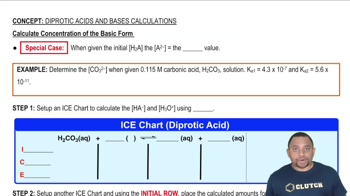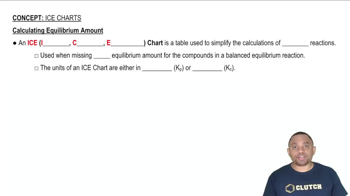Here are the essential concepts you must grasp in order to answer the question correctly.
Equilibrium Constant (Kc)
The equilibrium constant (Kc) is a numerical value that expresses the ratio of the concentrations of products to reactants at equilibrium for a given reaction at a specific temperature. For the reaction H2(g) + I2(g) ⇌ 2 HI(g), Kc is calculated using the formula Kc = [HI]^2 / ([H2][I2]). A higher Kc value indicates that the products are favored at equilibrium.
Recommended video:
Equilibrium Constant Expressions
Initial Concentrations
Initial concentrations refer to the amounts of reactants and products present in a reaction mixture before any reaction occurs. In this case, the initial concentrations of H2, I2, and HI can be calculated by dividing the number of moles by the volume of the reaction vessel (5.00 L). These initial values are crucial for determining how the system will shift to reach equilibrium.
Recommended video:
Calculate Concentration of the Basic Form
ICE Table (Initial, Change, Equilibrium)
An ICE table is a tool used to organize the initial concentrations, the changes in concentrations as the reaction proceeds, and the equilibrium concentrations of reactants and products. By setting up an ICE table for the reaction, one can systematically calculate the changes in concentration based on the stoichiometry of the reaction and the equilibrium constant, leading to the final equilibrium concentrations.
Recommended video:
ICE Charts and Equilibrium Amount




